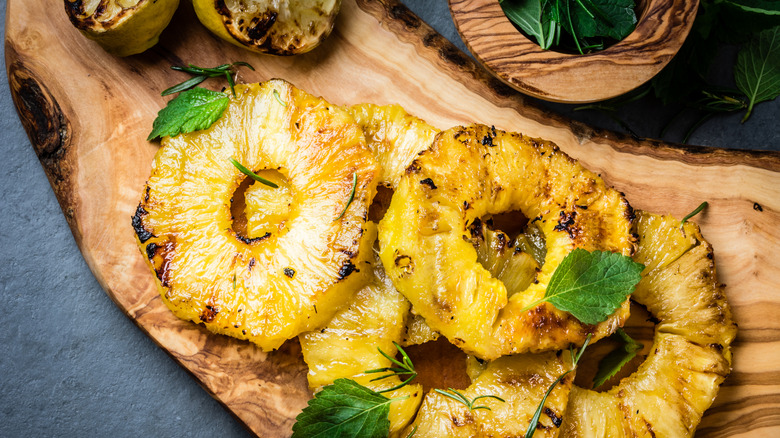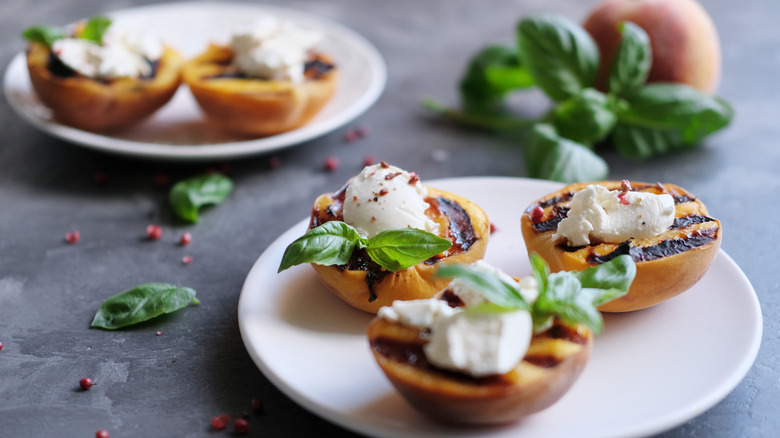Upgrade Your Roasted Fruits With A Quick Char
It's hard to top fruit that's at peak ripeness — or is it? While fresh fruit is full of flavor and juicy goodness, we'd wager that anything from apples to watermelon will taste even better when subjected to a bit of heat. Roasting is one of the best ways to elevate a fruit's complexity, thanks to the opportunity for caramelization. But you can go a step further and give your fruit the ultimate final touch with a brief char.
Charred isn't synonymous with burned, although there is a fine line between the two. Think of charring sort of like an extreme version of browning. Fruits shouldn't be completely blackened, but exposing them to high heat should scorch their surface area just slightly. What makes charring so special is that it can add depth of flavor that caramelization alone can't achieve — along with crisping up textures, the charring is able to impart some smokiness and bitterness, which can play nicely against the fruit's natural sweetness.
As for how to go about charring, you could do it on a grill, over a bonfire, or in a cast iron pan. However, slow-roasting beforehand will soften and sweeten fruit to its fullest, resulting in a more pleasant contrast of textures and flavors when charred. Since roasted fruit will already be neatly lined on a sheet pan, all you need to do is switch on the oven's broiler in the final minutes of cooking to achieve an effortless char.
What fruits to char and how to serve them
Nearly any fruit can be charred. Plums, pears, citrus, persimmons, mangos, rhubarbs, strawberries, pineapples, figs, or melons all work well — just remember that different fruits will char at different rates and produce different results. For instance, stone fruit might stand up better to extreme heat, whereas berries might become jammy, or citrus might release more juice. That said, given that fruit will lose some of its sturdiness during roasting, firmer options with peels or rinds will ensure your produce doesn't totally fall apart.
When it comes to execution, keeping a close eye on fruit is the most important part of the process. It can go from browned to singed in an instant, so broil for no longer than a minute or two so that the right amount of blackening occurs around the fruit's edges. Likewise, don't worry about flipping or turning; it's enough that the fleshy area of the fruit is exposed to the heat source.
Not sure what to do with charred fruit once it's out of the oven? After letting it cool, add sweetly charred fruit to a salad of peppery greens, use it as a main ingredient in a fruity steak sauce, or serve it on a savory flatbread. Otherwise, play into its sweetness and use it to layer into parfaits, top ice cream, or stack into s'mores. Whatever you decide, charred fruit is sure to take any dish to new and exciting heights!

